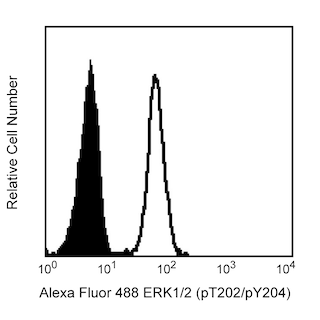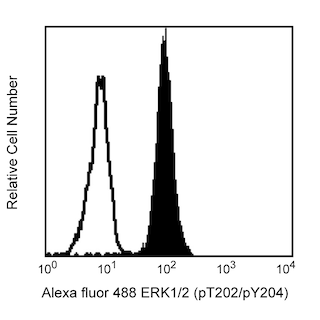-
Training
- Flow Cytometry Basic Training
-
Product-Based Training
- BD FACSDiscover™ S8 Cell Sorter Product Training
- Accuri C6 Plus Product-Based Training
- FACSAria Product Based Training
- FACSCanto Product-Based Training
- FACSLyric Product-Based Training
- FACSMelody Product-Based Training
- FACSymphony Product-Based Training
- HTS Product-Based Training
- LSRFortessa Product-Based Training
- Advanced Training
-
- BD FACSDiscover™ S8 Cell Sorter Product Training
- Accuri C6 Plus Product-Based Training
- FACSAria Product Based Training
- FACSCanto Product-Based Training
- FACSLyric Product-Based Training
- FACSMelody Product-Based Training
- FACSymphony Product-Based Training
- HTS Product-Based Training
- LSRFortessa Product-Based Training
- United States (English)
-
Change country/language
Old Browser
This page has been recently translated and is available in French now.
Looks like you're visiting us from {countryName}.
Would you like to stay on the current country site or be switched to your country?


.png)

Analysis of SLP-76 in human peripheral blood lymphocytes. Human whole blood was lysed and fixed with 1X BD Phosflow™ Lyse/Fix Buffer (Cat. No. 558049) for 10-15 minutes at 37ºC, then permeabilized (BD Phosflow™ Perm Buffer II, Cat. No. 558052) on ice for 30 minutes, and then stained with Alexa Fluor® 647 Mouse Anti-Human CD3 mAb UCHT1 (Cat. No. 557706), PerCP-Cy5.5 anti-human CD20 mAb H1(FB1) (Cat. No. 558021), and either Alexa Fluor® 488 Mouse anti-SLP-76 (solid-line histograms) or Alexa Fluor® 488 Mouse IgG2a, κ Isotype control mAb MOPC-173 (Cat. No. 558055, dashed-line histograms). The figures show lymphocyte subpopulations that were selected by their scatter profile and surface antigen expression. SLP-76 expression on CD3-positive CD20-negative T lymphocytes (left panel), CD20-positive CD3-negative B lymphocytes (center panel), and CD20-negative CD3-negative NK cells (right panel) are displayed. There was no detectable expression of SLP-76 in the monocyte/granulocyte population (not shown). Flow cytometry was performed on a BD FACSCalibur™ flow cytometry system.
.png)

BD™ Phosflow Alexa Fluor® 488 Mouse anti-SLP-76
.png)
Regulatory Status Legend
Any use of products other than the permitted use without the express written authorization of Becton, Dickinson and Company is strictly prohibited.
Preparation And Storage
Product Notices
- This reagent has been pre-diluted for use at the recommended Volume per Test. We typically use 1 × 10^6 cells in a 100-µl experimental sample (a test).
- Please refer to www.bdbiosciences.com/us/s/resources for technical protocols.
- Alexa Fluor® 488 fluorochrome emission is collected at the same instrument settings as for fluorescein isothiocyanate (FITC).
- For fluorochrome spectra and suitable instrument settings, please refer to our Multicolor Flow Cytometry web page at www.bdbiosciences.com/colors.
- The Alexa Fluor®, Pacific Blue™, and Cascade Blue® dye antibody conjugates in this product are sold under license from Molecular Probes, Inc. for research use only, excluding use in combination with microarrays, or as analyte specific reagents. The Alexa Fluor® dyes (except for Alexa Fluor® 430), Pacific Blue™ dye, and Cascade Blue® dye are covered by pending and issued patents.
- Caution: Sodium azide yields highly toxic hydrazoic acid under acidic conditions. Dilute azide compounds in running water before discarding to avoid accumulation of potentially explosive deposits in plumbing.
- Source of all serum proteins is from USDA inspected abattoirs located in the United States.
- Alexa Fluor® is a registered trademark of Molecular Probes, Inc., Eugene, OR.
Companion Products


.png?imwidth=320)
SLP-76 (SH2 domain-containing Leukocyte Protein of 76 kDa) is a tyrosine phosphoprotein that is involved in the T cell receptor (TCR)-mediated intracellular signaling pathway. It may be involved in the signaling pathways of other peripheral blood leukocytes; thymic/splenic cells; and in human T, B, and monocytic cell lines. SLP-76 consists of several motifs that signify its importance in protein-protein interactions involved in intracellular signaling pathways, such as the SH2 domain in the C-terminus, the three amino-terminus 17-amino acid repeats with conserved tyrosine and acidic residues (DYE(S/P)P), and a proline rich region. SLP-76 has been shown to associate with Gads, Grb2, PLCγ1, SLAP-130, and Vav, all of which are part of the signaling cascade in T lymphocytes. An early event in the T cell activation pathway is the phosphorylation, by the Syk-family kinase ZAP-70, of SLP-76 at the three conserved tyrosine motifs, which then mediate interactions with downstream effectors.
The H3 monoclonal antibody recognizes SLP-76, regardless of phosphorylation status.
Development References (5)
-
Bonilla FA, Fujita RM, Pivniouk VI, Chan AC, Geha RS. Adapter proteins SLP-76 and BLNK both are expressed by murine macrophages and are linked to signaling via Fcγ receptors I and II/III. Proc Natl Acad Sci U S A. 2000; 97(4):1725-1730. (Clone-specific: Immunoprecipitation).
-
Fang N, Motto DG, Ross SE, Koretzky GA. Tyrosines 113, 128, and 145 of SLP-76 are required for optimal augmentation of NFAT promoter activity. J Immunol. 1996; 157:3769-3773. (Biology). View Reference
-
Janssen E, Zhang W. Adaptor proteins in lymphocyte activation. Curr Opin Immunol. 2003; 15:269-276. (Biology). View Reference
-
Wardenburg JB, Fu C, Jackman JK, et al. Phosphorylation of SLP-76 by the ZAP-70 protein-tyrosine kinase is required for T-cell receptor function. J Biol Chem. 1996; 271(33):19641-19644. (Immunogen: Immunoprecipitation, Western blot).
-
Wu JN, Koretzky GA. The SLP-76 family of adapter proteins. Semin Immunol. 2004; 16:379-393. (Biology). View Reference
Please refer to Support Documents for Quality Certificates
Global - Refer to manufacturer's instructions for use and related User Manuals and Technical data sheets before using this products as described
Comparisons, where applicable, are made against older BD Technology, manual methods or are general performance claims. Comparisons are not made against non-BD technologies, unless otherwise noted.
For Research Use Only. Not for use in diagnostic or therapeutic procedures.
Report a Site Issue
This form is intended to help us improve our website experience. For other support, please visit our Contact Us page.